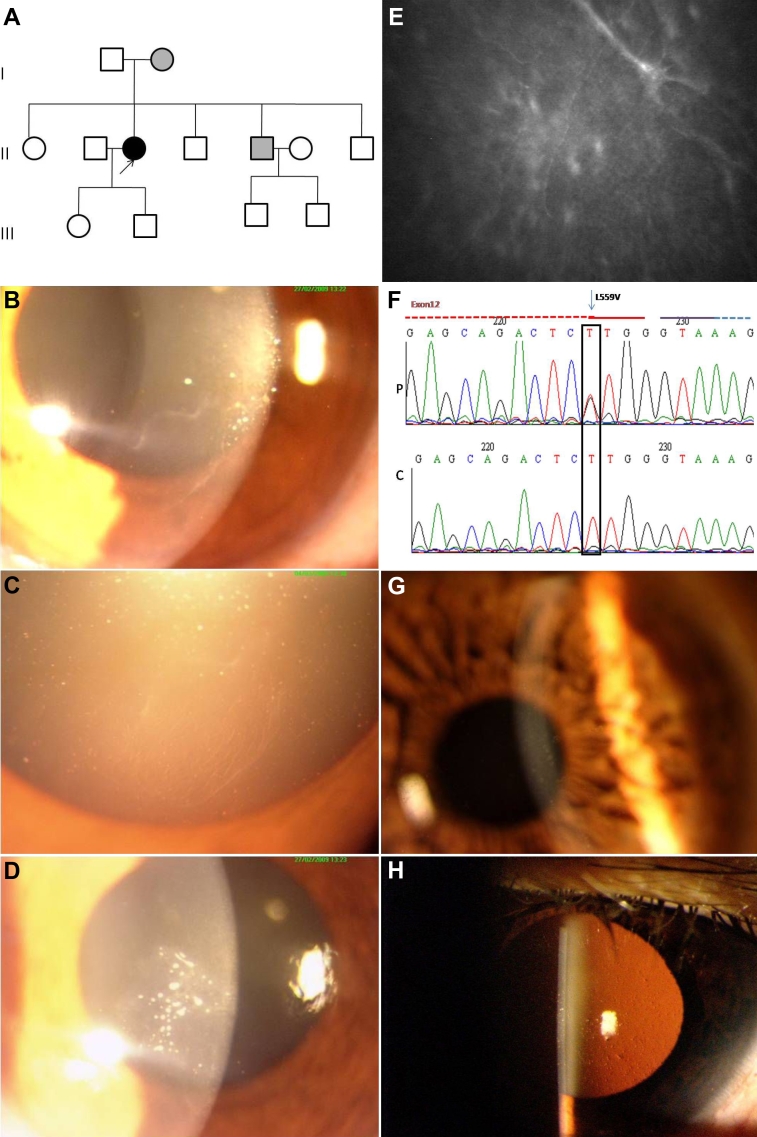Figure 2.
Family 2 showing the L559V mutation in the transforming growth factor beta induced (TGFBI) gene. A: Pedigree of the family. Filled boxes represent affected individuals. Open boxes represent unaffected individuals. Arrowhead indicates the proband. Gray boxes mark the affected individuals with a variable phenotype. B-E: Slit lamp and in-vivo confocal photomicrographs of the affected individual. The representative clinical photographs of the proband show the presence of a map-like structure in the right eye (B). Retro illumination photomicrograph demonstrates a fingerprint-like pattern in the right eye (C). The left eye of the proband shows multiple dot-like opacities (D). The map pattern in the sub-epithelial region, which was confirmed by in vivo confocal microscopy, is shown (2E). F: Partial nucleotide sequence of the transforming growth factor beta induced (TGFBI) gene. The chromatogram of the patient (P) is shown compared to a control (C). A heterozygous T>G substitution, marked by the arrowhead, is shown. The block denotes the nucleotide with missense mutation that results in amino acid substitution of Leucine at 559 position with Valine. The partially dashed blue line on the top right of the chromatogram marks the start of intron while the red line marks the exonic region. G-H: Representative slit lamp photomicrographs of the affected family member. Representative clinical photographs of the affected family member (G) showing very fine dot like opacities in the right eye. The indirect slit lamp retroillumination image (H) shows the presence of multiple dimple-like structures in the affected cornea.

